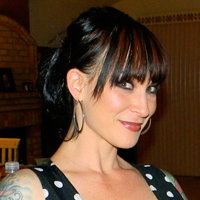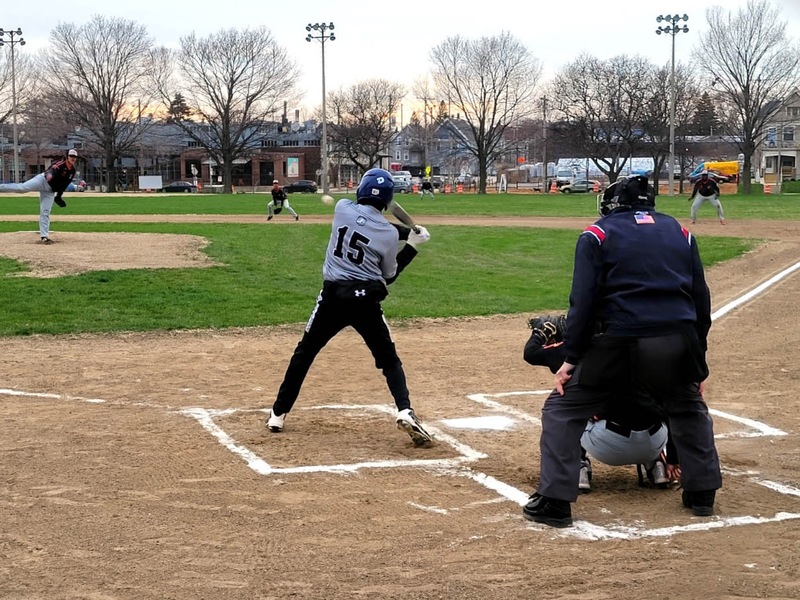In Part One of this series, the Nashville Sounds’ athletic trainer Aaron Hoback gave some insight into how the players stay healthy in preparation for making the transition to The Milwaukee Brewers. He even gave his prescription for the number one exercise any athlete should be performing for health, functionality and athleticism – the Turkish Get Up.
Have you been doing them? I even showed you a non-weighted, beginner version in a video on my Instagram account!
In this installment, we get to the specific details included in the daily training regime of a professional baseball player prepping to one day play at Miller Park. My biggest takeaway from this particular interview was that 80 percent of a professional athletes’ program is sport specific. That leaves 10 percent for strength and 10% for "everything else."
This is a great theory to apply to your athletic endeavors. So, if rock climbing is your thing – spend 80 percent of your time focusing on direct rock climbing skills, but make room for that other twenty percent of strength training and "other stuff" like flexibility and cardio.
Below, you’ll find my conversation with The Sounds’ strength and sonditioning specialist, Andrew Emmick, who gave me that piece of golden advice.
Emmick is responsible for designing and implementing precise training programs for the entire team. Emmick gives unprecedented insight here into what really goes on in a pro-athlete’s day and drops tons of valuable training information anyone interested in being and staying active will gain from. Reading Emmick’s daily schedule is fascinating. Try not to get vicariously exhausted, considering the agenda he and the team must adhere to.
Baseball enthusiasts and fitness fanatics alike will obtain inspiration from this super interview. Find out more about the future Brewers by following the Sounds on Facebook and Twitter. And be sure to look for the final installment in this series, which will be a workout from Emmick custom designed for OnMilwaukee.com readers to workout like a prospective Milwaukee Brewer.
Lindsay Garric: As the strength and conditioning specialist for the Nashville Sounds, what is your typical day like?
Andrew Emmick: I will give you a typical day with a 7:05 p.m. game at home. I show up to work around 11am and get started with computer work / setting up for the day to come. Players show up around 1 p.m,. and I will head over to my weight-room and prepare for their arrival. Pitchers’ stretch is at 3:30 p.m., followed by Position Player stretch at 3:50 p.m.
Before early work / stretch, I will have players come over to the weight-room and do some corrective work / activation / lifting. I will guide each of them through a program, or I will monitor them and make sure they are doing everything correctly. Most of them will be on a different program from one another.
When 3:30 p.m. rolls around, I take the pitchers and guide them through a dynamic warm-up for 5 minutes, followed by a static stretch for 8-10 minutes. I then take my relief pitchers and condition them. Their conditioning will change daily, but consists mostly of sprint work.
Once they finish conditioning, they will start their throwing program and I will gather up the position players at 3:50 p.m. and take them through the same stretch. When I am done with them, they will start their throwing program and I will go back to the pitchers and make sure all the starting pitchers are getting their conditioning / lifting done.
Each starting pitcher has a routine for each day between starts and I make sure they are sticking to it and putting forth a great effort. One starting pitcher usually throws a bullpen each day, and I will take them to the weight-room to perform an upper body lift / shoulder program / core work once they have completed it.
Batting practice starts around 4:15 p.m., and this is usually spent guiding a starting pitcher through a workout or doing some computer work. Around 6:40 p.m., I will go out to the foul line and stretch a few guys out individually before the game. During the game, I will get times of position players running from home to first, make sure everyone is drinking enough fluids and occasionally stretch someone if they are possibly coming in for a pinch hit / double switch.
When our starting pitcher comes out of the game, I will take him to the training room and guide him through our shoulder program. When the game ends, I will assist the athletic trainer, if necessary, in the training room. If he doesn’t need me, I will grab my computer and finish up my reports. Approximately an hour after the game, I will shower up and head home for the night. This typical day is very similar to what we would do on the road, except that I take a group of players to the designated gym (provided by the home team) every morning at 10 a.m.
LG: The "purpose" of the Nashville Sounds is to prepare players for the Milwaukee Brewers. Do you ever find that players get too motivated with their training? For instance, have you ever had a player want to move up so badly that he’s overtrained? How do you deal with this?
AE: By the time a player reaches Triple A, they usually will have a routine or an idea of what they need to do in order to play at the best of their ability. Occasionally, we will have guys that want to go 100 percent at all times, and we just remind them of how long the season is and that they must give themselves recovery periods.
The guys that can typically overwork are the players at the lower levels. Most of them are coming out of high school and college, and they aren’t familiar with playing every day. They try to continue their old routine, and at some point we will notice them "hitting a wall."
Once a player finishes their first full season of professional ball, they will have an idea of how to train during the season. Starting pitchers at each level are also the players that can occasionally overtrain. They have more downtime than the other players, so they feel like they have to constantly be doing something in the weight-room. The athletic trainer and I pay close attention to their programs and make sure they are taking recovery weeks and not overworking themselves.
LG: Without revealing any trade secrets, what is a general player workout like?
AE: A baseball player’s goal is to excel in their sport, and they lift to get a strength advantage over an opponent of equal skill. And if they hope to climb the ladder to the big leagues, practicing their baseball skills must dominate their schedule.
Strength training must take up as little of their time and energy as possible – all in hopes of leaving them with as much gas in the tank as possible for paying baseball. A player’s daily schedule should consist of 80 percent sport skill practice, 10 percent strength training, and 10 percent of everything else.
With our hectic baseball schedule of playing 144 games in 152 days, I like for the guys to lift once per series, or every four days. These workouts are short and basic during the season (less than 40 minutes in duration,) but we still focus on getting stronger. I like for them to perform a total body lift, which will consist of 2-3 upper body lifts, 2-3 lower body lifts, and 2 core stabilization exercises. These lifts are usually large muscle lifts, such as pull-ups or squats.
Most workouts are very similar, with maybe a tweak here and there for certain guys. I try to keep the reps in the 3-5 range, keeping the volume around 10-12 reps per lift (3-4 sets of 3-5 reps.) This doesn’t mean that higher volumes are not effective in building strength. It’s just that the fatigue and soreness that accompany high-volume training make it inappropriate for our athletes.
Recovery is rapid and soreness is minimal after low-rep, low-set heavy lifting. As for intensity, we train in the 80-90 percent 1RM intensity zone. The idea is to build as much strength as possible while staying as fresh as possible for the games. When it comes to program design, I like to vary the intensity every workout. For my guys during the season, they vary from a medium intensity to a high intensity to a low intensity, and then repeat.
Aside from strength training, we also make sure our guys are doing preventative work a few times per series. The game of baseball and the movements involved cause a lot of muscular imbalances, asymmetries, weaknesses and tightness, which in time can lead to injuries.
Before the season, we have all players perform a functional movement screen. This screen can help prevent injuries by identifying risk factors. Once we know where each player is at risk, we design programs to help correct these movements. Each player will have different results from the FMS test, some worse than others. We advise the players to perform the corrective exercises daily to help lower their chances of an injury occurring in the future.
LG: How much do training routines differ between the Sounds and the Brewers?
AE: We try to keep our daily schedules and workout programs as similar as possible so that when a player gets promoted, he is able to keep the same routine without affecting his baseball activities. The strength and conditioning staff and the medical staff throughout the Brewers organization work very well together. We share ideas and communicate extremely well. Our main goals throughout the organization are to keep players healthy, strong and on the field so that the Milwaukee Brewers can compete to become World Champions.
Lindsay Garric is a Milwaukee native who calls her favorite city home base for as long as her lifestyle will allow her. A hybrid of a makeup artist, esthetician, personal trainer and entrepreneur all rolled into a tattooed, dolled-up package, she has fantasies of being a big, bad rock star who lives in a house with a porch and a white picket fence, complete with small farm animals in a version of Milwaukee that has a tropical climate.
A mishmash of contradictions, colliding polar opposites and a dash of camp, her passion is for all pretty things and the products that go with it. From makeup to workouts, food to fashion, Lindsay has a polished finger on the pulse of beauty, fashion, fitness and nutrition trends and is super duper excited to share that and other randomness from her crazy, sexy, gypsy life with the readers of OnMilwaukee.com.







